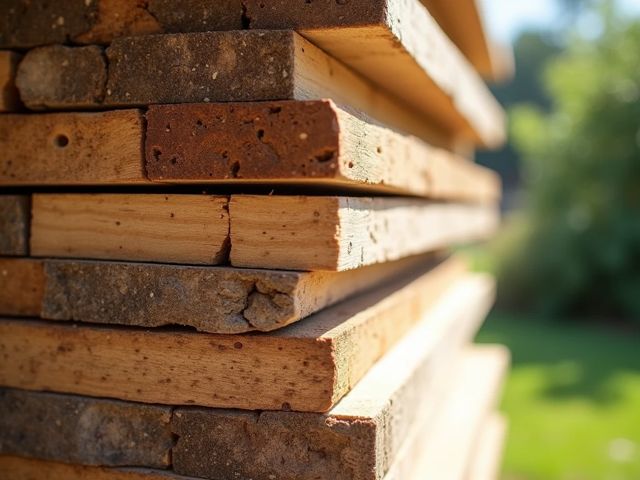Softwoods like cedar and redwood are recommended for tool fences due to their moisture resistance and compatibility with woodworking tools. Beginners might prefer softer woods like pine, while those focused on aesthetics or durability could consider cherry, oak, or pressure-treated pine.
1. Tools and Wood Compatibility
This article offers insights from a Quora discussion on choosing wood for a wood fence, guiding homeowners in selecting materials that match tool compatibility for efficiency and durability. Understanding the synergy between woodworking tools like router tables and table saws with particular wood types can enhance construction quality.
Softwoods such as cedar and redwood are popular for fence construction due to their resistance to rot and moisture. Cedar’s aromatic properties make it suitable for router tables, which helps in crafting intricate fence components. Redwood, with its moisture resistance, adapts well to both table saws and router tables, providing smooth, precise cuts without excessive tool wear. More details are available at best wood types for fencing.
Hardwoods like oak and maple are favored for their robustness. Oak is known for stability and workability, ideal for sturdy fence panels. Maple’s dense structure pairs well with high-precision tools, requiring a durable blade like the LUXITE carbide-tipped saw blade for efficient cutting. Discover the impact of wood choices on durability at choosing the right wood for fences.
Beginners are recommended to use softer woods like pine or fir, which pose less stress on tools and are conducive to developing woodworking skills. Pine’s versatility aids in withstanding common tooling errors, making it user-friendly.
For aesthetic ventures, combining woods like cherry and mahogany can achieve striking visuals. Cherry’s adaptability complements intricate designs, especially with a maintained router table. For durability, consider wood vs. composite fencing alternatives.

2. Riff Cut Pine and Its Benefits
Riff cut pine offers affordability and practical benefits for those building wood fences. For budget efficiency, view affordable pine fencing solutions.
Riff cut pine is economical, allowing budget expansion and enhancement in other project aspects. Its workability simplifies DIY installations, reducing complexity and time investment. Its distinctive grain pattern adds visual and structural stability, beneficial in regions with diverse weather.
This balance of cost, function, and aesthetics makes riff cut pine a favored choice for tool fences, offering affordability and robustness in construction.
3. Birch Plywood: An Overview
Birch plywood combines aesthetic appeal and practical benefits for tool fences. Understanding its properties can assist in effective project execution. Known for a smooth surface and light color, it complements outdoor decor seamlessly. The durable layered construction resists warping and cracking due to cross-bonded layers, making it reliable against environmental factors.
In terms of design, birch plywood supports various applications, from simple to complex. Its affordability presents an appealing option for budget-conscious homeowners wanting quality without excessive spending.
Utilizing birch plywood enriches both appearance and functionality, making it a sought-after material for residential fencing projects.

4. Choosing Pickets for Your Project
When selecting pickets for your wood fence project, Pickets products stand out for their blend of charm and strength. Here’s why they might be the right choice for your home:
Pickets are celebrated for their aesthetic appeal. They effortlessly complement a variety of architectural styles, adding timeless allure to your property. The picket design allows for airflow between the slats, reducing wind pressure and potential damage from adverse weather.
Their longevity is impressive, with wood versions lasting up to 20 years under proper care. You can maintain their durability by repainting or recoating, and replacing any planks that get damaged over time. This maintenance routine contributes significantly to their long-term reliability. To prevent degradation, you might explore mantaining your wood fence.
Wood pickets from Pickets are environmentally friendly, as they’re biodegradable and can be sourced from reclaimed materials. This makes them a sustainable option for homeowners conscious of their environmental impact.
When paired with the right tools, Pickets products ensure ease of installation and continued maintenance. Their availability in various styles and finishes means you can choose pickets that align with your specific aesthetic preferences, enhancing your property’s curb appeal beautifully and economically.
These aspects make Pickets products a top-tier choice for homeowners seeking a fence that is not only practical and durable but also stylish and ecologically considerate.

5. Weather and Wood Considerations
Local climate influences wood choice for tool fences, determining durability and upkeep. In humid areas, water resistance is crucial. Pressure-treated pine is cost-effective and rain-resistant. Conversely, cedar and redwood resist UV-induced damage, suiting areas with intense sunlight. In colder regions, cedar handles freeze-thaw cycles, minimizing weather-induced damages.
For those interested in a white picket aesthetic, check out Greenes Picket Fence 16 ” X 12 ‘ White Bulk, a durable and stylish option.

FAQ
What are the best softwood options for building wood fences?
Cedar and redwood are excellent options for softwood fences, providing resistance to rot and moisture, aromatic qualities, and tool compatibility.
Why is riff cut pine a popular choice for wood fences?
Riff cut pine is favored for its cost-effectiveness and ease of use, providing quality and aesthetic benefits for diverse weather conditions.
What makes birch plywood suitable for tool fences?
Birch plywood offers a mix of appeal and functionality, with a smooth surface, durable construction, and flexibility in design.
How can Pickets products benefit my wood fence project?
Pickets deliver aesthetic charm and strength, emphasizing environmental benefits and installation procedures, making them suitable for stylish and practical fencing solutions.
How do weather conditions affect the choice of wood for fences?
Weather significantly influences wood selection. Water-resistant types are ideal for wet regions, UV-resistant woods suit sunny areas, and cold climates benefit from wood adaptable to temperature changes.

